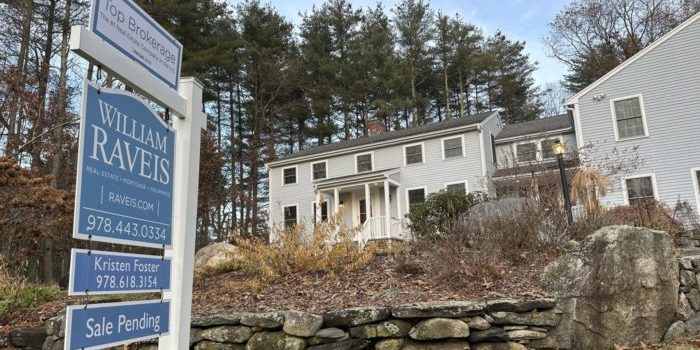(Headline USA)The average rate on a 30-year mortgage eased this week to its lowest level in 15 months, welcome relief for home shoppers navigating a housing market that remains out of reach for many Americans.
The rate fell to 6.46% from 6.49% last week, mortgage buyer Freddie Mac said Thursday. A year ago, the rate averaged 7.23%.
The average rate is now the lowest it’s been since mid-May last year, when it was 6.39%.
Borrowing costs on 15-year fixed-rate mortgages also fell this week, good news for homeowners seeking to refinance their home loan at a lower rate. The average rate fell to 5.62% from 5.66% last week. A year ago, it averaged 6.55%, Freddie Mac said.
Mortgage rates are expected to continue trending lower overall this year, as signs of waning inflation and a cooling job market have raised expectations that the Federal Reserve will cut its benchmark interest rate at its policy meeting next month, which would be the first such easing in four years.
“Although mortgage rates have stayed relatively flat over the past couple of weeks, softer incoming economic data suggest rates will gently slope downward through the end of the year,” said Sam Khater, Freddie Mac’s chief economist.
Democrats have been angling for the rate cut as a way to juice up the economy ahead of the November election.
Earlier in the week, the Biden administration’s Labor Department acknowledged that it had been lying about the jobs data for the past year, artificially inflating the numbers to give a sense that the economy was more robust than it really was.
But with unemployment higher than perceived, it essentially admitted that the narrative about a so-called soft landing to the Fed’s rate hikes had been fabricated.
The revised number indicated that they had inflated the figure by som 818,000 jobs.
“That equates to 68,000 fewer jobs per month than initially touted—and includes 115,000 fewer manufacturing jobs, 104,000 fewer trade, transportation, and utility jobs, and 45,000 fewer construction jobs,” noted Jake Schneider, rapid response director for the Republican National Committee, in a press release.
Critics noted that there were no losses to government jobs.
Despite the ploy, Fed chair Jerome Powell signaled that the trickery was likely to have its intended effect, locking in the much anticipated September rate-cut.
“The time has come for policy to adjust,” Powell said Friday at the Fed’s annual retreat in Jackson Hole, Wyo., according to CNBC.
After jumping to a 23-year high of 7.79% in October, the average rate on a 30-year mortgage has mostly hovered around 7% this year—more than double what it was just three years ago. But this month, the average rate has made its biggest downshift in more than a year, sliding to around 6.5%.
The recent pullback in mortgage rates overall has sparked a pickup in applications for home refinancing loans, which are 23% higher than a month ago, according to the Mortgage Bankers Association.
Applications for home purchase loans have lagged, however.
“We expect rates likely will need to decline another percentage point to generate buyer demand,” Khater said.
Elevated mortgage rates, which can add hundreds of dollars a month in costs for borrowers, have kept many would-be homebuyers on the sidelines, extending the nation’s housing slump into its third year.
Sales of previously occupied U.S. homes are running below last year’s pace, though they ended a four-month slide in July.
The rate on a 30-year mortgage is influenced by several factors, including how the bond market reacts to the central bank’s interest rate policy decisions. That can move the trajectory of the 10-year Treasury yield, which lenders use as a guide to pricing home loans.
The yield, which topped 4.7% in late April, was at 3.86% in afternoon trading in the bond market Thursday, following mixed data on the U.S. economy, which has been slowing under the weight of high interest rates meant to get inflation under control.
Most economists expect the average rate on a 30-year home loan to remain above 6% this year. That may not be enough for many prospective homebuyers in the face of record-high home prices and a shortage of properties for sale in many markets.
“Home prices are still rising in most markets,” said Lisa Sturtevant, chief economist at Bright MLS. “Opportunities for moderate-income and first-time homebuyers will still be limited even with a drop in rates.”
Adapted from reporting by the Associated Press

